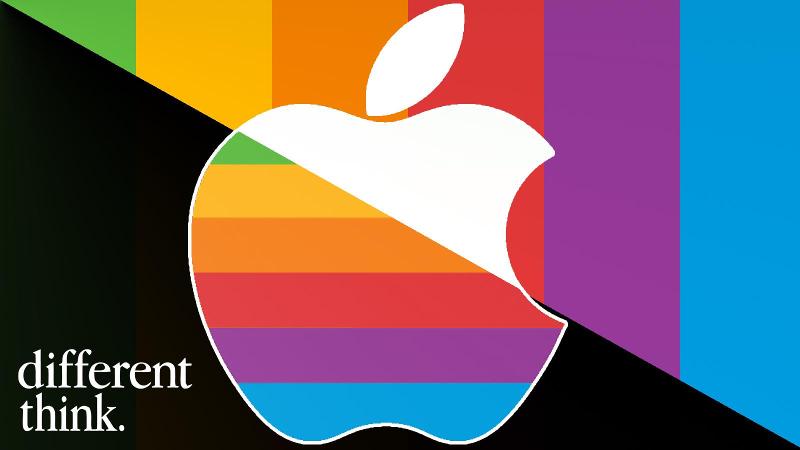Numbers are important, as any cricket fan or lottery winner will tell you, but they’re not everywhere. It’s odd, when you think about it, the way certain objects are numbered and others… just aren’t.
Football players are numbered. American (but not English) pool balls are numbered. Takeaway dishes (sometimes) and ice creams (occasionally) are numbered. Series and episodes of TV shows are numbered. Films and games are numbered – or used to be, until the rise of the colon and the ampersand, so much more welcoming to newcomers and satisfying to shareholders.
But how many other products are numbered, even when they fit into a logical sequence? Books, occasionally, although the number is subordinate to the title. Records, almost never, unless you’re Scott Walker or Led Zeppelin. Shakespeare liked to number some of his histories, of course; I never watched Henry V because I hadn’t seen the first four plays and thought I wouldn’t understand the plot.
The iPhone goes fourth
And the iPhone, famously and most pertinently to this column, has been numbered, sometimes logically, ever since the much-loved iPhone 4 in 2010. It was the fourth iPhone, so it was called the iPhone 4. Simple and accurate. Bliss it was in that dawn to be alive.
iPhones before and since have adhered less strictly to the rules of arithmetic. The iPhone 3G got its name because of its inclusion of 3G connectivity rather than because it was the third model (it was actually the second), and the 3GS landed on the correct number, one would imagine, by accident.
The fifth model was called the iPhone 4s, cementing the tick-tock S-generation brand convention that would throw off numbering ever afterwards, meaning the iPhone 5 was actually the sixth model, the iPhone 6 was the eighth (assuming you consider the 5c and 5s as a single generation) and the iPhone 7 was the 11th (if you include the SE in the ‘canon’ sequence). And then we got to the iPhones with Roman numerals, and all bets were off.
Apple’s approach to the world of numbers is eccentric, then, but it’s also inconsistent with the way the company brands nearly all of its other products. iMacs and MacBooks are labelled with specs and years, not numerical generations. There’s no Apple TV 3, and there’s unlikely to ever be a HomePod mini 2.
A number of other products – the iPad, AirPods and Apple Pencil, most notably – do have generational labels, but the company doesn’t use these as part of its promotional branding. They’re part of the small print. They’re not the brand.
But the iPhone – along with the Apple Watch, whose Series numbers have gone up each year with admirable mathematical sense, if you ignore the second-gen Series 1 which made the original model, retrospectively, the Series 0 – has stuck relentlessly with the system where a new model comes out and the number goes up by one.
The iPhone which is announced this September will probably be called the iPhone 13, and you’ll see the number 13 in an attractive sans serif font on a white background in all sorts of grotesquely tasteful adverts. This number will be a central plank in Apple’s entire sales pitch.
I am not a number
In fact it might yet be called the iPhone 12s, for reasons related to both that tick-tock tradition mentioned earlier and the superstitions attached in certain parts of the world to the number 13. But wouldn’t it be better to take this opportunity to drop the numbering system altogether, and treat the new phone in the same way as a new Mac mini? Ladies and gentlemen, we’re thrilled to present the iPhone (2021).
There. Isn’t that nicer?
The issue I have with iPhone numbers is that they no longer serve a purpose. They don’t help customers differentiate between models because the numbers are so huge and they don’t follow a logical pattern.
To anyone who doesn’t realise “iPhone X” is pronounced “iPhone Ten”, it’s not at all clear how that fits into the sequence alongside the iPhone 8 and the iPhone 11. (Talking of which, what happened to the iPhone 9?) The iPhone SE has no apparent anchor to the rest of the system, and the S-generation models are baffling to anyone unfamiliar with the system.
More fundamentally, the branding “iPhone 12” doesn’t actually give you any absolute information about the device – it only works relative to other models. It’s one generation newer than the iPhone 11, of course (assuming you’re lucky and there hasn’t been an S-generation to complicate matters). But when did the iPhone 11 come out? This is why you’ll see vendors like Amazon including phrases like “latest generation” on the end of Apple product names. (A practice that is, of course, open to all sorts of confusion and even abuse.)
All of this would be hugely simplified if the iterative numbers were replaced by years. How old is the iPhone (2021)? It’s brand new! It came out in the year 2021. Look, it’s right there in the name.
And if this doesn’t work, Apple can instead call the next device iPhone & The Continued Lack Of Under-Screen Touch ID.
Different Think is a weekly column in which Macworld writers expose their less-mainstream opinions to public scrutiny. We’ve defended the notch, argued that Microsoft is out-designing Apple, and told Apple to stop being so successful. Tune in next Tuesday to see us once again defend the indefensible.

